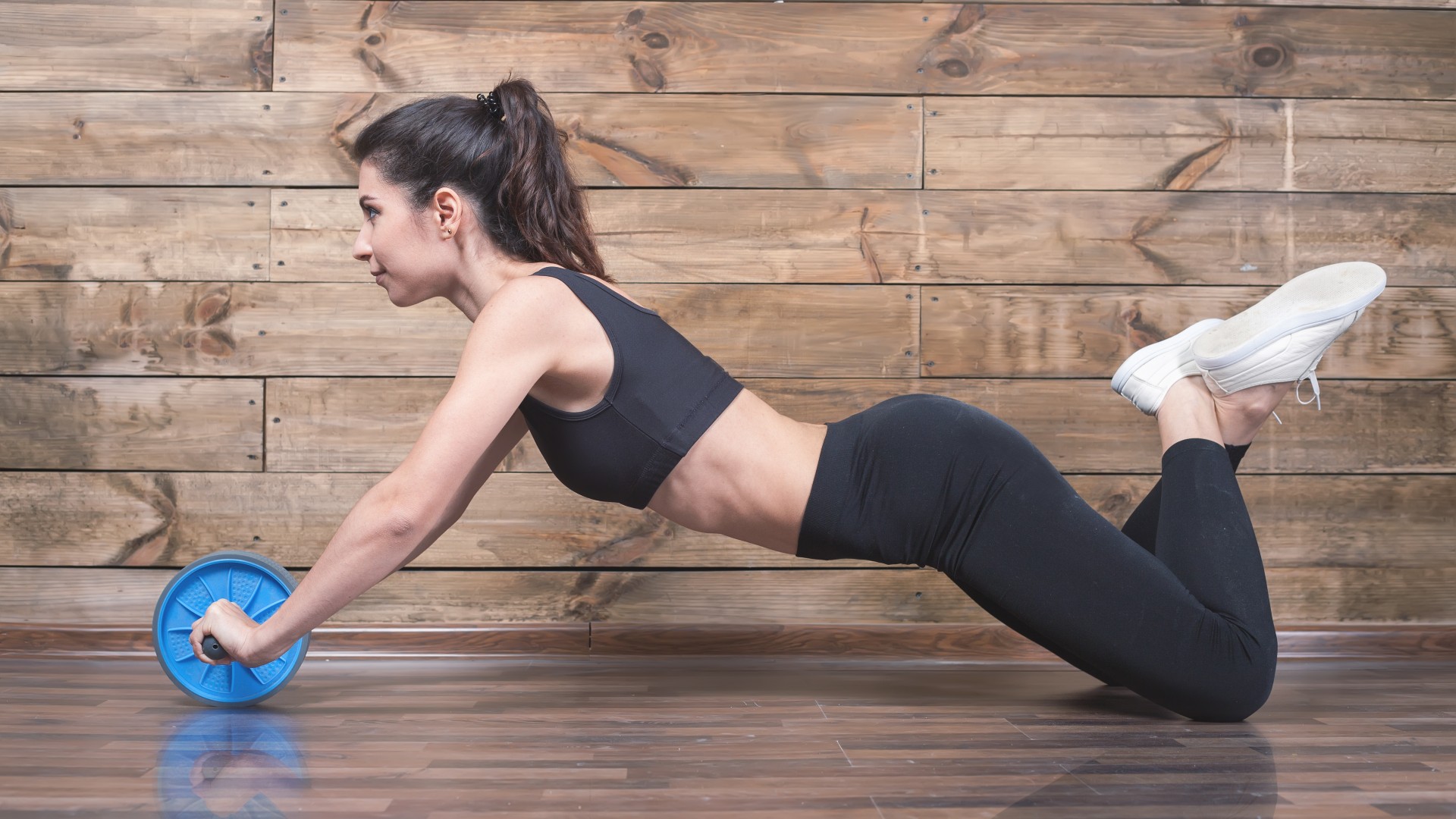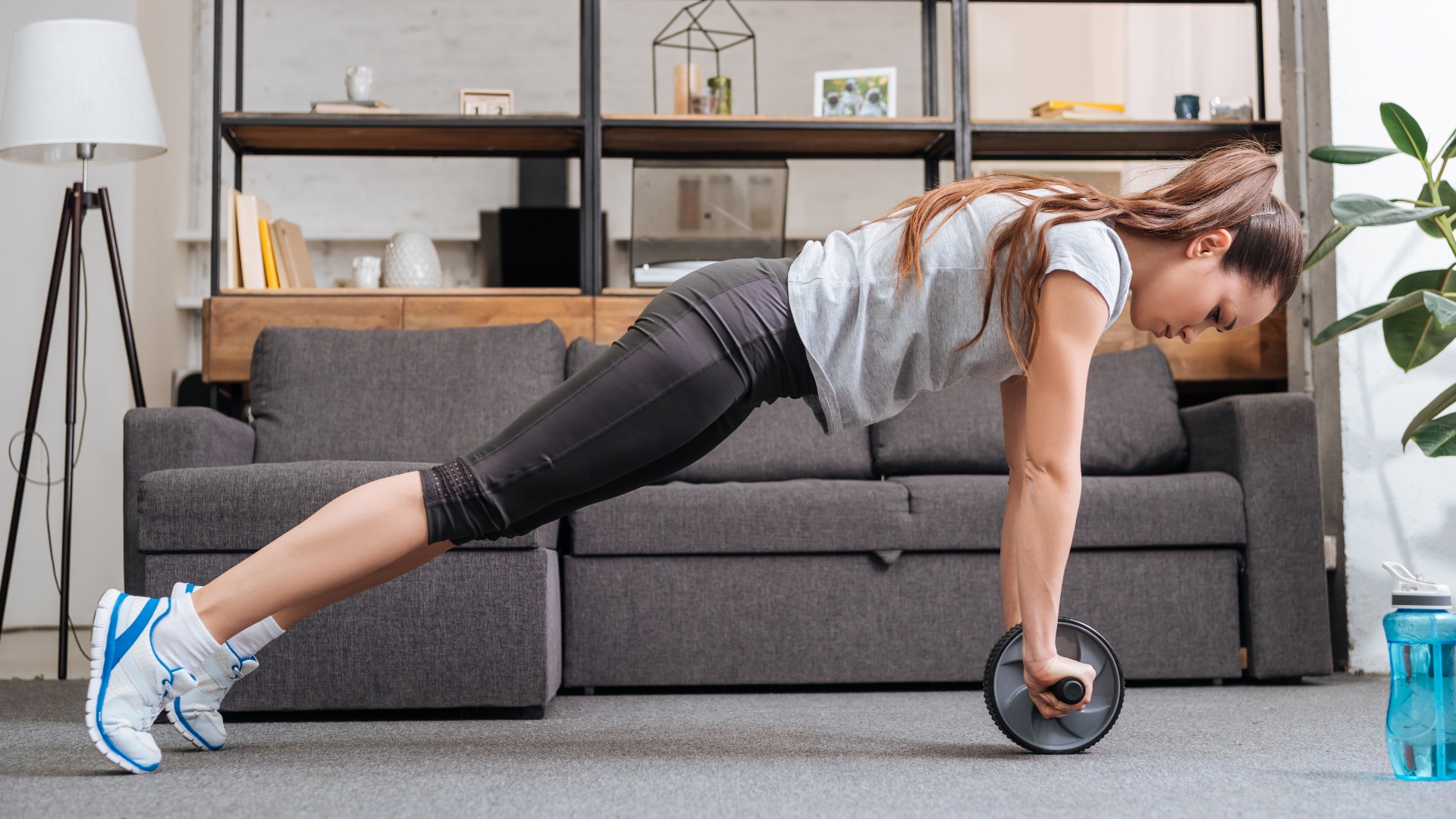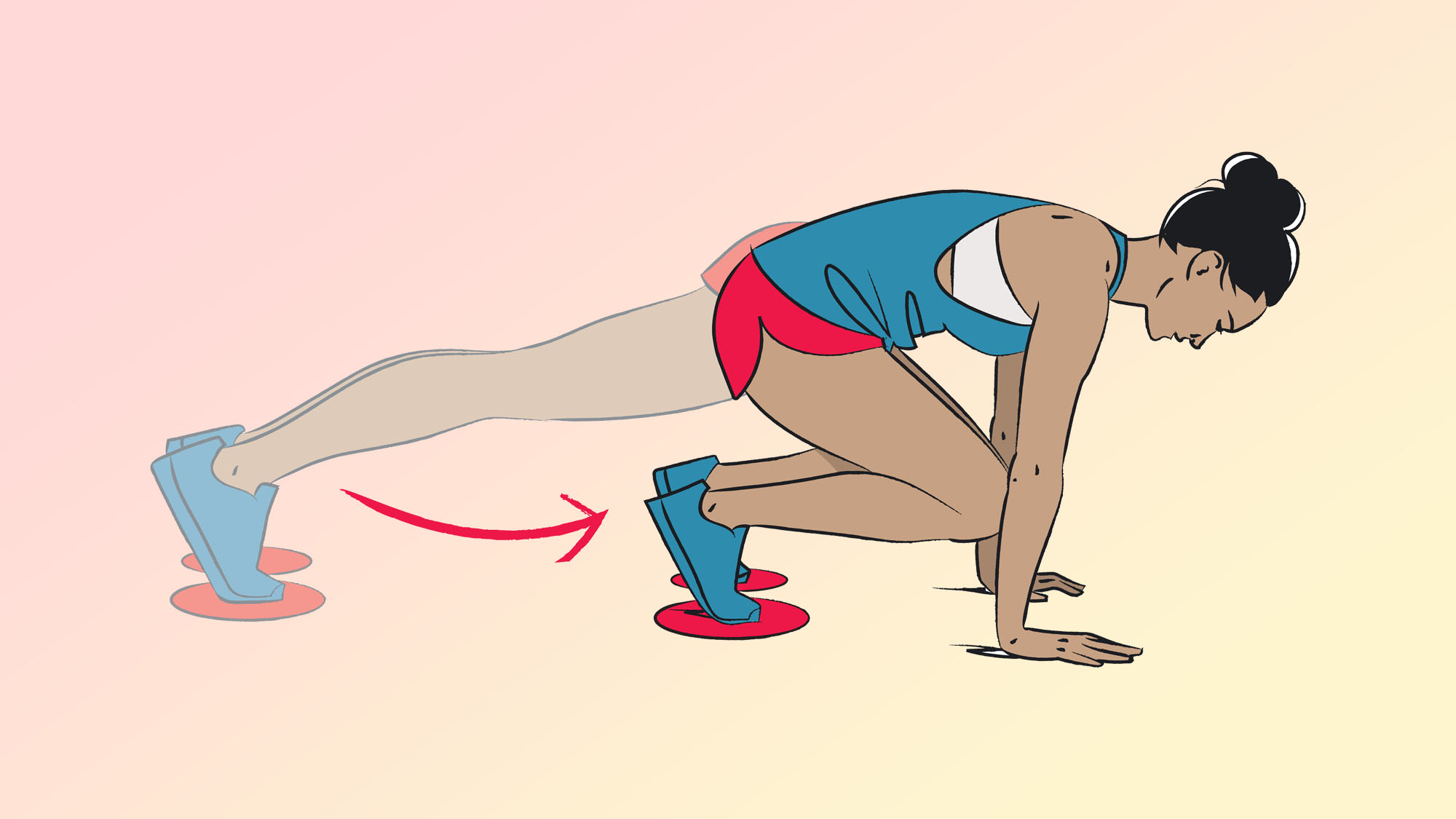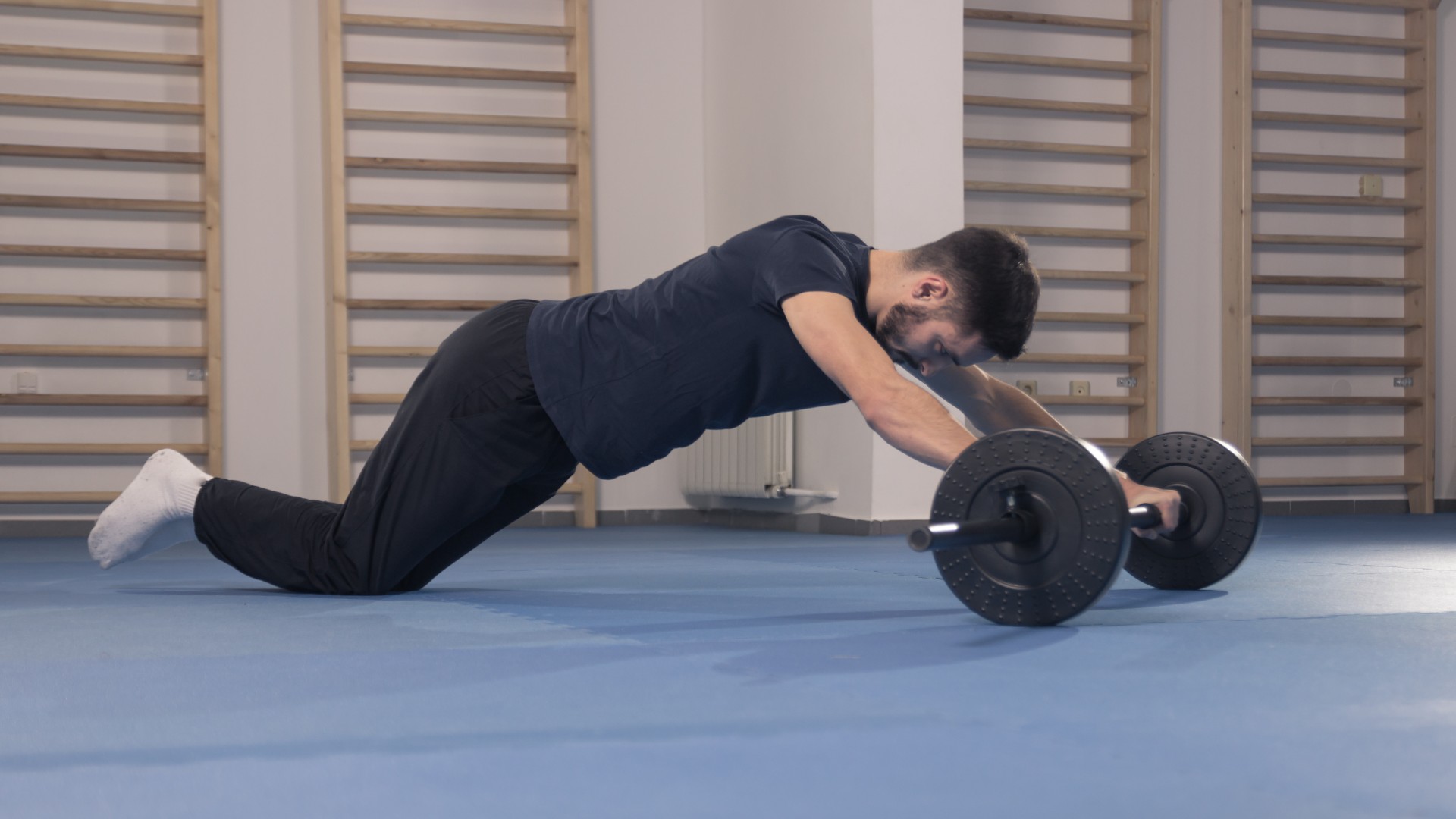
Not only do ab rollouts hit your core hard, but they also require shoulder strength and mobility to support the rolling motion of the wheel as it steers away from the body. You’ll develop upper body strength, build ab muscle and activate your hips, back and shoulders.
The move is famed for building rock-solid abs, and it goes without saying that the ab wheel rollout remains one of the toughest ab exercises to get right. But if you have an injury and can’t do it — these three ab rollout exercise variations are the next best thing, and just as spicy for your core muscles.
We recommend one of the best yoga mats for your knees if you plan to try the full variation. Here’s how to do each of the ab wheel exercises below, and why you should.
What are the best ab wheel rollout exercises to chisel your abs?
If you have a shoulder injury, limited mobility, or core strength, ab wheel rollouts might be too challenging. You could build up to them with practice and some of the best ab exercises for strengthening your core, or if they’re off the table for good, no worries, you can use your ab wheel in a few ways.
To learn more about what you could expect from seven days of ab wheel rollouts, I did 50 ab wheel rollouts every day for a week, and here are my results.
3 ab wheel rollout variations to chisel your core muscles
1. Ab wheel plank

You don’t need the rollout to see the benefits of the exercise. The plank builds strength in your core, shoulders, arms, chest, lower back, glutes, hamstrings, hip flexors and quads using isometric (static) contraction.
During the ab wheel plank, your muscles are battling to stabilize you while your hands rest on the handles attached to a thin wheel. You could develop your balance, coordination and muscular endurance by working to keep the wheel still. We guarantee your shoulders and abs will feel this one.
Get instant access to breaking news, the hottest reviews, great deals and helpful tips.
Here’s how to do an ab wheel plank:
- Hold an ab wheel and grip the handles with both hands. Start on your knees and straighten your arms
- Engage your stomach and stack your shoulders over your wrists
- Step one foot back at a time into a high plank position
- Keep your hips in line with your shoulders and squeeze as many muscles as possible as you gently suck your belly button toward your spine
- Hold the position without the ab wheel moving.
Once you feel more comfortable, progress by gently moving the ab wheel forward and back or lifting one leg at a time.
2. Ab wheel knee tucks

The plank knee tuck using an ab wheel is one of our top ways to torch core muscles and engage your hip flexors and legs. Be ready to fire up the quads and glutes with this variation.
This time, you’ll roll with your feet, not your hands. The lower abdominals and stabilizer muscles work hard here, along with your shoulders and obliques.
How:
- To do the move, you’ll need an ab wheel with straps. Start by securing both feet in the straps and move to a high plank
- Engage your stomach muscles and maintain a flat back
- Slowly and with control, begin rolling the wheel toward your arms, drawing both legs toward your chest with bent knees
- Reverse with control without dipping your hips toward the floor.
To progress the move, elevate your hands on a balance board to challenge stability and core activation.
3. Barbell ab rollouts

This one divides crowds, but I find the barbell variation easier than the full ab wheel rollout, while many others find it much tougher. The wider surface area could help people with weaker shoulders find stability and play with arm position, but a loaded barbell is trickier and heavier to navigate than an ab wheel.
If ab wheels aren’t suitable, this could be a bridging ab rollout exercise worth trying.
The move works the same muscle groups — the abs, shoulders, hip flexors, arms, erector spinae (spine stabilizers), transverse abdominis (the deeper belt of core muscles beneath the abs), lats and chest. The research even shows your chest muscles can engage more during ab rollouts than your lats.
How:
- Start on your knees and grip a loaded barbell shoulder-width distance apart. The more weights you load, the harder it will be
- Engage your core, shoulders and glutes, then shift your weight forward so that your shoulders sit over the bar
- Tuck your pelvis under to create a hollow hold shape and push your upper back upward
- Slowly roll the barbell forward as far as you can. Keep your hips lifted
- Pause, then draw the wheel back to your starting position.
Learn more about barbell ab rollouts to perfect your form.
What are the benefits of ab wheel exercises?

The ab wheel rollout is an effective ab exercise for building strength and muscle, engaging all core muscles together. Many people perform ab rollouts kneeling. For an extra challenge, you could try them from a standing position.
Regularly including the exercise in your core workouts could help strengthen, tighten and define your midsection, but remember, a toned tum is the aesthetic result of hard work elsewhere — lifestyle and diet springs to mind.
Crucially, the stabilizer muscles work hard. These muscles sit like a tyre in layers around the torso, helping with movement and posture. Keeping them strong is beneficial for other sports like weightlifting.
If you plan to try ab rollouts, start on your knees and slowly increase the range of motion, only rolling a little at a time until you reach your limits. Seek medical advice if you suffer from lower back or shoulder pain.
More from Tom's Guide
- I did 70 dragon pistol squats every day for a week, here are my results
- Oura Ring new features just unveiled, here's what you need to know
- I test running shoes for a living, these great pairs are still on sale.

Sam Hopes is a level 3 qualified trainer, a level 2 Reiki practitioner and fitness editor at Tom's Guide. She is also currently undertaking her Yoga For Athletes training course.
Sam has written for various fitness brands and websites over the years and has experience across brands at Future, such as Live Science, Fit&Well, Coach, and T3.
Having coached at fitness studios like F45 and Virgin Active and personal trained, Sam now primarily teaches outdoor bootcamps, bodyweight, calisthenics and kettlebells.
She also coaches mobility and flexibility classes several times a week and believes that true strength comes from a holistic approach to training your body.
Sam has completed two mixed doubles Hyrox competitions in London and the Netherlands and finished her first doubles attempt in 1:11.
